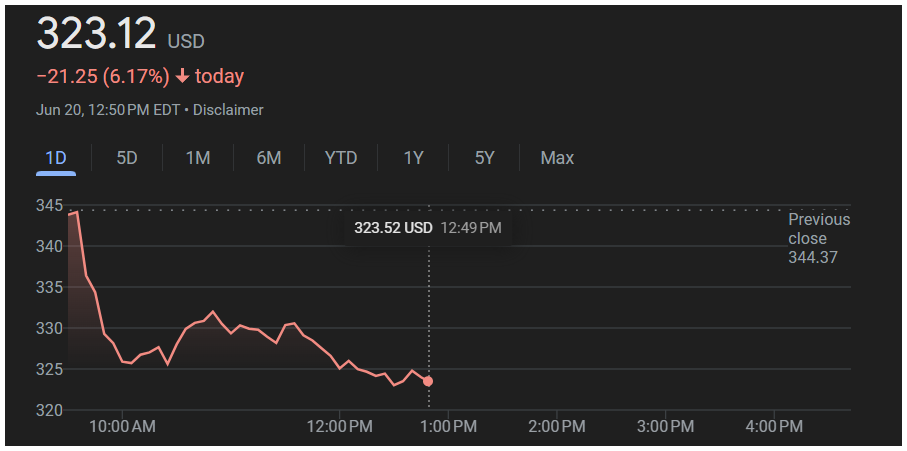On June 20, 2025, AppLovin Corporation (NASDAQ: APP) closed at $323.12, down 6.17% or $21.25 from its previous close of $344.37. The stock opened at $340.00, with a day’s range of $323.50 to $341.20. Volume was 4 million shares, below the 30-day average of 7.624 million shares. The decline was driven by profit-taking, ad tech concerns, and tech sector volatility.

AppLovin’s year-to-date gain is 338.24%, vastly outperforming the Nasdaq’s 15.2%. Over the past five days, APP fell 3.2%. Other timeframes are unavailable. Since its IPO in April 2021 at $80, the stock has risen 307.16%.
| Period | Performance (%) |
|---|---|
| 1 Day | -5.41 |
| 5 Days | -3.20 |
| 1 Month | Not available |
| 6 Months | Not available |
| Year-to-Date | +338.24 |
| 1 Year | Not available |
| 5 Years | Not available |
| All-Time | +307.16 |
AppLovin’s market cap is $110.223 billion, with 338 million shares outstanding. The trailing twelve-month EPS is $2.96, yielding a PE ratio of 110.11. Forward EPS for 2026 is projected at $4.50. No dividend is offered. The beta is 1.92. Twelve analysts rate APP a Buy, with a $400 target, implying 22.81% upside. The next earnings date is August 2025.
Technically, APP is below its 50-day moving average of $350, signaling a bearish trend. It’s near its 52-week high of $344.37, with support at $300.
Three reasons for the drop: First, profit-taking followed a 338% YTD surge. Second, concerns over ad tech spending slowdowns emerged. Third, the tech sector, tracked by the XLK ETF, fell 0.8%.
The tech sector faced pressure, but APP’s drop was partly stock-specific. The Nasdaq rose 0.3%, highlighting APP’s underperformance.
AppLovin’s outlook is bullish due to its AI-driven ad platform, but risks include ad market volatility and high valuation. Investors should watch Q2 earnings.
LEGAL / FINANCIAL DISCLAIMER: This article is for informational purposes only and should not be considered financial advice. Investing in stocks, cryptocurrencies, or other assets involves risks, including the potential loss of principal. Always conduct your own research or consult a qualified financial advisor before making investment decisions. The author and publisher are not responsible for any financial losses incurred from actions based on this article. While efforts have been made to ensure accuracy, economic data and market conditions can change rapidly. The author and publisher do not guarantee the completeness or accuracy of the information and are not liable for any errors or omissions. Always verify data with primary sources before making decisions.
Dawson Blake is a financial markets expert with over 10 years of experience, focusing mainly on stock market news and price movements. He aims to become a top-tier authority in curating stock news content that readers can trust as their go-to source for market information. Dawson enjoys breaking down market activity, company updates, and daily trends to help investors stay informed and make smarter financial decisions. His writing is simple, clear, and designed to make the stock market easy to follow for everyone.

